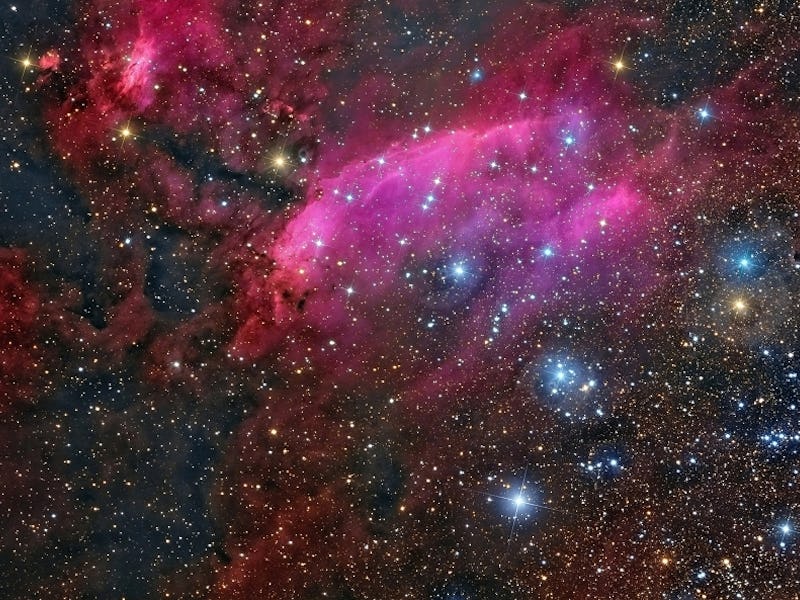The Prawn Nebula, located approximately 6,000 light-years from Earth, is a big fan of recycling. Though it was originally dubbed Gum 56 after the Australian astronomer Colin Stanley Gum, seafood-loving astronomy enthusiasts won out and propelled the prawn moniker forth as the more popular label. Nomenclature aside, this cosmic cloud dazzles in a new tantalizing color image produced by combining data from the European Southern Observatory’s wide filed OmegaCAM with amateur images.
The massive galactic superbubble is home to a population of newborn stars, which are nestled in the gaseous clouds that spawned them. That same life-bringing mixture of gas and dust is forged from the guts of long-dead stars.
When stars reach the end of their life, they literally go out with a bang in the form a of gigantic explosion known as a supernova. The explosion seeds the region with the material needed to form new stars, and thus the circle of stellar life continues.
A view of the Prawn Nebula
The Prawn Nebula is found in the tail of the nebula-rich constellation Scorpius. The region shown in the image spans approximately 250 light-years across.
Nestled in this massive stellar nursery are clusters of hot young stars — which are only a few million years old — seen glow brightly in ultraviolet light. The starlight from the fledgling stars is what causes the nebula to glow. The radiation emitted by the stars strips electrons off of hydrogen atoms within the gas — a process known as ionization. When they recombine, energy is released in the form of light. Each chemical element has it’s own spectral fingerprint, meaning each element emits light in a specific color. The Prawn Nebula is known to have an abundance of ionized hydrogen, which gives it the reddish pink hue we see in this dazzling image.
